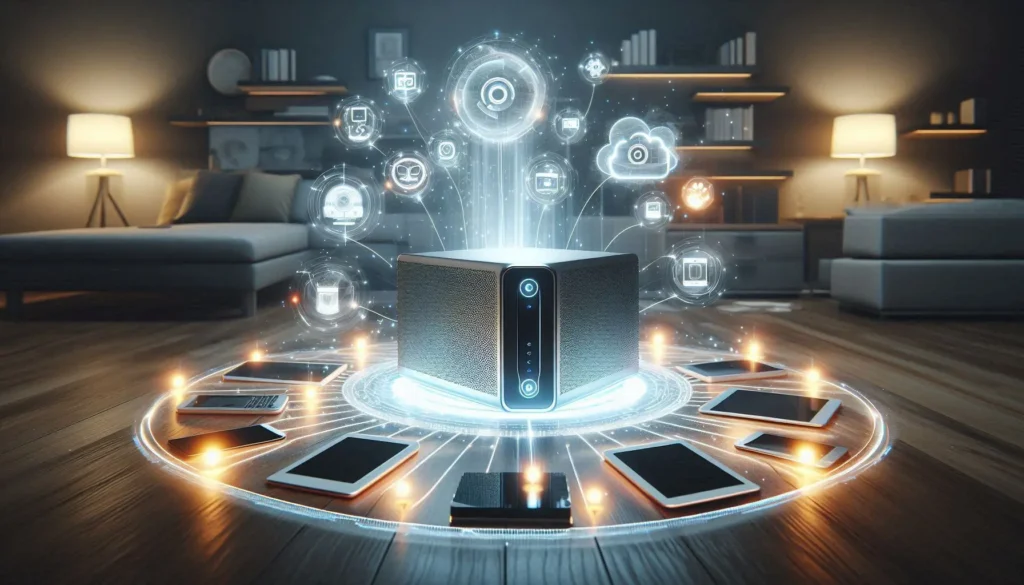
Suiting Up: Gear Check Before You Plunge In
Alright, tech aficionados, before you dive into the digital ocean that is Plex, you need the right gear. Think of it as donning your armor. First, prepping your hardware and software is crucial. A seamless installation journey begins with meeting the basic system requirements: a suitable processor, adequate RAM, and sufficient storage. Check Plex’s official guidelines to ensure your setup measures up.
Moreover, your network configuration is your launchpad for success. Aim for at least a dual-band router for optimal performance, as speed demons like us won’t settle for buffering. A wired Ethernet connection? Even better. Make sure your Wi-Fi is up to par; weak signals are no match for high-flying media streaming. Suit up, and you’re ready to conquer Plex installation.
Issue #1: Server Not Discoverable on LAN
Common Causes for Server Discovery Issues
First challenge on the docket: the notorious “Server Not Discoverable on LAN” issue. Blame it on crossed wires, quite literally, as network misconfigurations often lead to such setbacks. Perhaps your server wasn’t granted static IP privileges, or maybe UPnP settings are acting up.
Solutions for Network Configuration Adjustments
Time for some rapid repairs. Begin by configuring your server’s network settings to assign a static IP address. Dive into your router’s settings and ensure UPnP is enabled—this tiny adjustment can work wonders.
Importance of Firewall and Antivirus Settings
Next up, scout the firewall. Your protection detail needs to know when to let the right data through. Ensure Plex Media Server has the exceptions it needs. Sometimes, even antivirus programs fancy themselves gatekeepers; give them a quick talk, or perhaps an update, to clear the air. Like a true hero, your server will shine bright on LAN in no time.
Also read:
Issue #2: Playback Troubles – From Buffering to Blunders
Identifying Buffering and Playback Quality Issues
Tired of your media stuttering like an indecisive DJ? Playback issues arise from poor network performance, or perhaps your Plex transcoder is cracking under pressure. If your gadget gang isn’t in sync, you’ll face hiccups.
Optimizing Transcoder Settings for Varied Device Compatibility
Time for some fine-tuning. Slash those transcoder settings to fit devices on your roster. Crunch the file sizes to make them digestible for your fire-breathing smartphone, tablet, or smart TV. Not all knights can wield the same sword, after all.
Networking Tweaks for Uninterrupted Streaming
Smooth streaming requires pumping your signal to full throttle. If Wi-Fi is your sidekick, then diagnose its range and strength. Occasionally, a change in router channel does the trick. If Ethernet cables are at your disposal, employ them to boost consistency—the buffer zone will vanish like a mirage.
Also read:
Issue #3: The Great Authentication Escape
Troubleshooting Plex Account Login and Authentication Problems
The Plex castle gates sometimes refuse to budge—how frustrating! Whether it’s forgetting the secret password or tangled two-factor authentication, gaining access can be quite the quest.
Managing Permissions and User Roles Effectively
Roles and permissions need a royal decree. Ensure your Plex account credentials are consistent, updated, and sans typographical errors. Configure user roles straightforwardly—give team members the right access without inadvertently inviting chaos.
Overcoming Common Remote Access Hurdles
Remote access can deliver some tough love, particularly with external connections. Firewall over-zealousness might block you; calm its nerves and ensure the appropriate ports are open. Or perhaps, your domain settings require a touch of finesse. Adjust them, and the world of remote access is yours.
Also read:
Issue #4: Library Configuration Chaos
Organizing Media for Seamless Library Creation
In the media menagerie, organization is key. A scattered library leads to a tangled web of confusion. Tidy up those file names and folders so Plex can expertly apply its magical metadata touch.
Correcting Metadata Mismatch and Refresh Issues
Plex’s sixth sense for metadata isn’t foolproof—missteps happen. Manually intervene when necessary. Refresh metadata to sweep away any remnants of past confusions and restore order.
Utilizing Advanced Settings for Library Customization
For the customization connoisseur, Plex’s advanced settings extend beyond the mundane. Dig into these for custom filters, scanners, and agents. Tailor your experience and watch as your media library morphs into an entertainment juggernaut.
Also read:
Issue #5: Updates Gone Rogue
Dealing with Update Installation Failures
Updates sometimes feel like a betrayal, right? Despite good intentions, they occasionally misfire. Don’t panic. Often, a forceful retry does the trick after a device reboot.
Rolling Back Updates Without Losing Hair, or Data
In volatile situations, retreat is noble. Roll back to previous version with a quick reinstallation, albeit with data backup forethought. This cautious approach prevents any wrenching data loss.
Strategies for Staying Up-to-Date with Minimal Impact
Forewarned is forearmed. Maintain the balance between staying fresh and avoiding disruption. Set update schedules conscientiously, preferably during off-peak hours, and scan community forums for potential pitfalls before taking the plunge.
A New Dawn: You’ve Got the Power Now
Congratulations, intrepid Plex explorer—you’ve piloted through installation obstacles with finesse. Empowered with these insights, no technical tribulation can rattle your newfound confidence. So, embrace the joy of flawlessly streamed media and the art of troubleshooting. Your Plex odyssey has just begun, and it promises nothing short of exciting digital allegiance.

Meet Plex-i Man, your friendly neighborhood Plex enthusiast and tech wizard. With years of experience tinkering with media servers and a passion for simplifying complex tech, Plex-i Man is on a mission to help everyone build their perfect Plex setup. When not writing guides or troubleshooting Plex issues, you’ll find him exploring the latest in home theater tech or binge-watching sci-fi series. Got a Plex problem? Plex-i Man is here to save the day!


